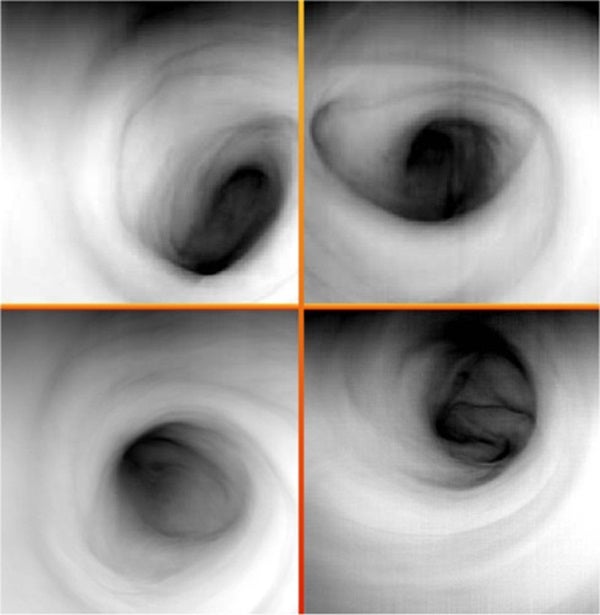A new animation using data from the European Space Agency’s (ESA) Venus Express spacecraft shows that the double eye of the giant vortex at Venus’ south pole has disappeared.
Orbiting around Venus since April 11, 2006, Venus Express is providing an extensive and unique dataset of great scientific importance, spanning from the planet’s surface to the atmosphere and its interaction with the solar wind. The Visible and InfraRed Thermal Imaging Spectrometer (VIRTIS) instrument studies Venus from orbit through atmospheric “windows,” which are transparent at certain infrared wavelengths and thus able to transmit the thermal radiance from deep regions in the venusian atmosphere. It also provides information about temperature of the atmosphere and the cloud tops, from which it is possible to study the dynamics and, in particular, the polar vortex.
In 1979, the Pioneer Venus mission observed a similar polar vortex with two apparent centers of rotation in the venusian northern hemisphere. Scientists labeled this feature the dipole of Venus. The VIRTIS instrument observed a similar shape in the southern hemisphere. This discovery revealed a north-south symmetry on Venus and, at first glance, confirmed the stability of the dipole. However, in the course of the mission, systematic observations with VIRTIS showed a large number of different shapes of the vortex with complex configurations and not well identified stable features.
“We had ironically observed it in a dipole configuration right at the beginning of the mission,” said Giuseppe Piccioni from the National Institute for Astrophysics in Rome. “But we soon discovered that this was just a coincidence since the dipole in reality is not a stable feature on Venus but just one shape among others.”
Piccioni and his colleagues also tracked the clouds in the venusian atmosphere in order to measure the wind speeds of the significant atmospheric “super-rotation,” rotating 60 times faster than the planet underneath. Observing at different wavelengths, they were able to probe different altitude levels within the atmosphere.
“We found a significant vertical shear, or change of winds with height, at low latitudes, with winds doubling from the lower clouds to the cloud tops,” said Piccioni. “However, the shear disappeared at higher latitudes in combination with a decreasing wind speed toward the pole.”
In fact, the polar region of Venus has peculiar dynamics different than the rest of the planet. A permanent giant vortex extending more than 1,900 miles (3,000 kilometers) dominates, and it rotates almost like a solid body. This is contrary to the vertical shear in the mid-to-low latitudes observed by Piccioni’s team. The ring surrounding the polar region, known as the cold collar, acts as a barrier separating the two rotation zones.










